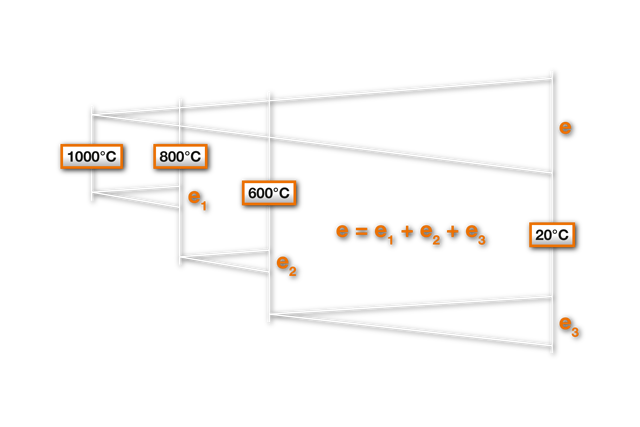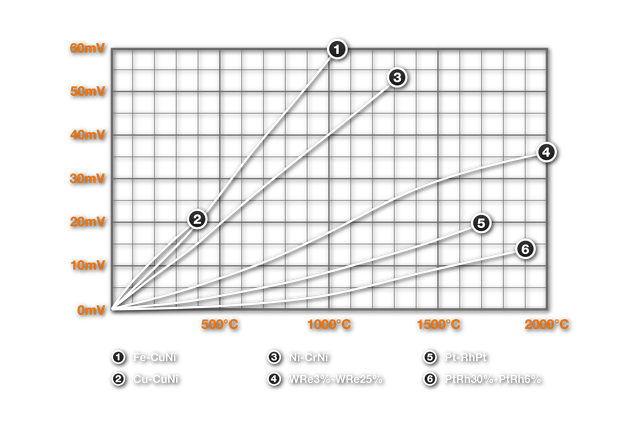Technical Information
3. Thermoelectric laws
The law of the homogeneous temperature
The voltage in an electric circuit constructed from as many different metals as desired remains zero, if all parts of this electric circuit are at the same temperature. No current flows in this circuit.
A thermovoltage arises only if a difference in temperature is present.
The law of the homogeneous electric circuit
In a homogeneous conductor thermovoltage cannot develop in an non-homogenous temperature field Also a homogeneous conductor lets itself be divided into a number of small batteries which neutralise themselves in their voltages, as long as the conductor is homogeneous and both ends of the conductor are at the same temperature. With a thermocouple therefore the thermovoltage depends only on the temperature difference between the measuring and cold junction. The thermovoltages developing in an electric circuit add to themselves therefore when the polarities are taken into consideration.
The law of the addition of thermovoltages
Since the thermovoltage represents a volume diffusion effect, a temperature gradient is connected with an electric current. One can for this reason imagine a piece of wire as a battery. A temperature gradient can be subdivided into as many subranges as desired, consequently the thermovoltage is made up of just as many partial voltages, the addition law applies.
Choose your language
Leave your number and we’ll call you back
Your direct contact to our team
GÜNTHER GmbH
Temperaturmesstechnik
Bauhofstraße 12
D-90571 Schwaig
info@guenther.eu
Tel. +49 (0)911 / 50 69 95-0
Fax +49 (0)911 / 50 69 95-55













